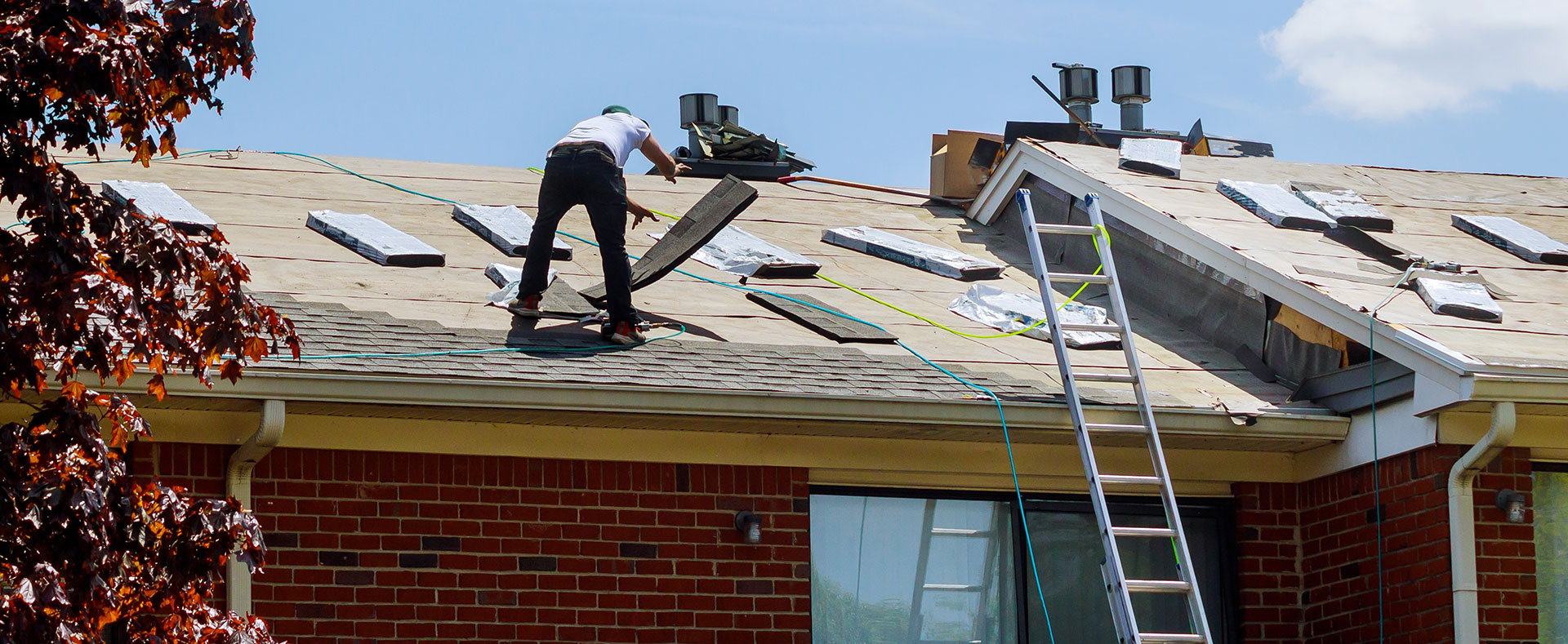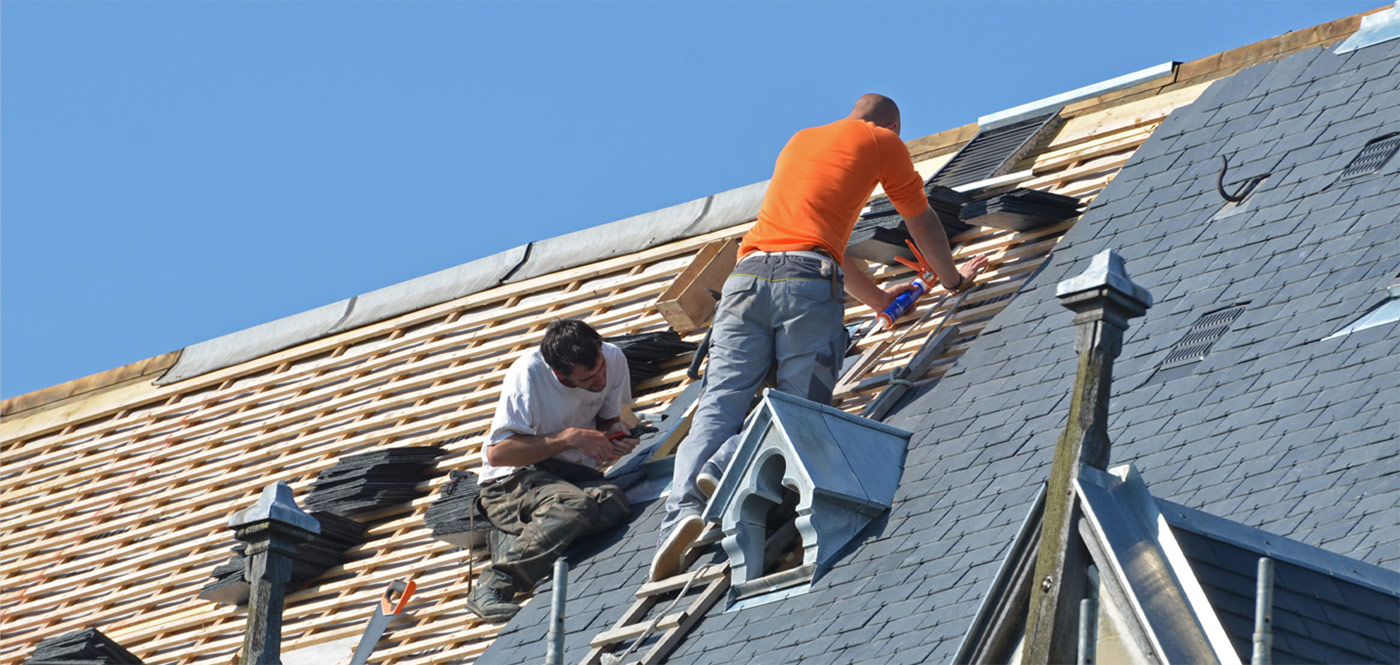Marketing Tips for Roofers: Stand Out in 2025
Getting noticed in the roofing business isn’t what it used to be. Sure, word-of-mouth still matters, but today’s homeowners are searching for contractors online before they ever pick up the phone. If you’re not showing up in those searches—or not making a great impression when you do—you’re leaving money on the table.
This guide breaks down five core strategies that actually work for roofers in 2025. No fluff, just practical tips you can start using today.

1. Target Locally: Own Your Neighborhood
When someone’s roof starts leaking, they’re not looking for a roofing company three states away. They want someone local, trustworthy, and available now. That’s why local marketing is your bread and butter.
Google Business Profile: Your “Digital Storefront”
Your Google Business Profile is often the first thing potential customers see when they search for roofers in your area. Think of it as your store’s front window for users passing by on Google.
- Complete every single field. Google rewards profiles that are completely filled out. Add your business hours, services, service areas, and a detailed description of what you do. Don’t skip the basics, such as your phone number and website—customers need easy ways to reach you.
- Post recent project photos regularly. Visual content is huge for roofing companies. When you finish a job, snap some quality photos and upload them to your profile. Show off your best work—it’s free advertising. We like to have 100 photos.
- Keep your information accurate and consistent. Your business name, address, and phone number (NAP) should match exactly across your website, social media, and all directories. Google checks for this consistency, and it affects how well you rank in local searches. Some of this can be automated.
- Update your hours, especially during holidays. Nothing frustrates customers more than calling your business only to find it closed. Keep your hours current, and if you’re closed for a holiday or special event, update your profile right away.
Reviews: The Trust Factor
Reviews are everything in the roofing business. People want to know they’re hiring someone reliable, especially when it’s a major investment like a new roof.
- Ask for reviews right after finishing a job. The best time to get a review is when the customer is thrilled with your work. Send a simple text or email with a direct link to your Google profile. This process can often be automated.
- Respond to every review—yes, even the bad ones. Thank customers for positive reviews and address any concerns in negative ones professionally. “97% of people reading reviews will also read your review responses,” according to a 2025 survey by BrightLocal. It shows you care about customer service.
- Don’t buy fake reviews or use shady tactics. Google’s gotten smart about detecting fake reviews, and getting caught can tank your ranking. Plus, authentic reviews with a mix of good and great feedback look more trustworthy than a perfect 5.0 from 500 reviews.
Google Guaranteed: Build Instant Trust
Google Guaranteed is a badge that appears on your Local Services Ads, showing customers that Google has verified and backs your business.
- Get screened and verified by Google. To earn the Google Guaranteed badge, you’ll need to pass background checks and license verification. It takes a bit of work upfront, but it’s worth it—that badge builds immediate trust.
- Show up at the top of search results. Google Guaranteed phone numbers appear above regular search results, putting you in front of customers at the exact moment they’re looking for help. You only pay when customers call you, not for clicks.
- Use it to differentiate yourself from competitors. Not every roofer can qualify for Google Guaranteed. Having that badge sets you apart and signals that you’re a legitimate, trustworthy business.
2. Content Marketing: Show Your Expertise
Content marketing isn’t about blasting sales messages—it’s about proving you know your stuff and helping customers make informed decisions. “Your goal is to keep customers on your website by presenting high-quality, engaging content while establishing your company as an expert in its field and generating goodwill,” explains Business.com. When you create valuable content, you build trust and become one of the first companies in mind when someone needs a new roof.
SEO: Get Found on Google & AI Tools
Search engine optimization (SEO) influences how you rank in search results when people search for roofing services in your area. It’s not magic—it’s strategy.
- Target local, high-intent keywords. Focus on phrases people actually search for, like “roof repair near me” or “best roofing company in [your city].” These searches signal that someone needs a roofer now.
- Create useful, practical content. Write blog posts that answer common questions: “How long should a roof last?” or “Signs you need a roof replacement.” This type of content attracts customers and keeps them on your website longer.
- Focus on content for people, not just search engines. Google’s algorithm prioritizes helpful, genuine content over keyword-stuffed nonsense. Share real project photos, describe your process, and write naturally.
- Build content that generates traffic. Don’t waste time creating content that no one will read. Focus on topics your customers care about and optimize for terms they’re searching for.
Social Media: Build Your Brand
Social media isn’t just for selfies and memes—it’s a powerful tool for roofing companies to showcase their work and connect with customers.
- Post real project photos and videos regularly. Show before-and-after transformations, crew members at work, and finished roofs. Visual content performs incredibly well, and people love seeing the quality of your work.
- Engage with your local community. Comment on local events, sponsor Little League teams, or share local news. Being active in your community—both online and offline—builds your reputation as a trustworthy local business.
- Share customer testimonials and success stories. Let happy customers tell your story. Post their reviews, share their kind words, and tag them (with permission). User-generated content is authentic and relatable.
- Use platforms where your customers hang out. Facebook and Instagram are solid choices for roofers. LinkedIn works well if you’re targeting commercial clients. Don’t spread yourself too thin—pick one or two platforms and do them well.
Video: Capture Attention Fast
Video content is exploding, and roofing companies that embrace it are reaping the rewards.
- Create short, engaging videos. Think 30-60 seconds max. Show a quick time-lapse of a roof installation, share a customer testimonial, or explain a common roofing problem. Short videos grab attention fast and are perfect for social media.
- Use video to educate and inform. Create “how-to” videos or explain the difference between roofing materials. Educational content positions you as an expert and helps customers make better decisions.
- Show your team and your process. People like doing business with people, not faceless companies. Introduce your crew, show them working safely on a job site, and give viewers a behind-the-scenes look at your business.
- Post consistently across platforms. Video works on Instagram Reels, TikTok, YouTube Shorts, Facebook, and even LinkedIn. Repurpose your content across multiple platforms to maximize reach without creating entirely new videos every time.
Graphic Design: Make a Strong Visual Impression
Good design makes your business look professional and trustworthy. Bad design does the opposite.
- Invest in a professional logo and brand colors. Your logo appears on your trucks, website, business cards, and social media. Make it clean, memorable, and professional. Consistency across all materials builds brand recognition.
- Create eye-catching social media graphics. Use tools like Canva to design posts that stand out in crowded feeds. Include your logo, use your brand colors, and keep text minimal and readable.
- Design clean, easy-to-read marketing materials. Whether it’s a flyer, estimate template, or website, keep designs simple and organized. Cluttered designs confuse people. Clean designs build trust.
- Use high-quality photos in all your marketing. Blurry, dark, or poorly composed photos make you look unprofessional. Take clear, well-lit photos of your work, or hire a professional photographer for key shots.
3. Keep Up with the Trends: Stay Ahead of the Competition
The marketing world changes fast. What worked two years ago might be outdated today. Staying current keeps you competitive and helps you reach customers in new ways.
AI & LLMs: Work Smarter, Not Harder
Artificial intelligence can’t do your job, but it can help you work more efficiently.
- Use AI to draft marketing materials. Tools like ChatGPT can help you write email campaigns, social media posts, and even blog content. Start with AI-generated drafts, then edit them to add your personal touch and expertise.
- Automate repetitive tasks. AI-powered tools can handle appointment reminders, follow-up emails, and customer inquiries. This frees up your time to focus on actual roofing work and high-value tasks.
- Optimize your business for AI search tools. Platforms like ChatGPT, Google’s AI summaries, and voice assistants are changing how people find businesses. Make sure your website has clear, helpful information that AI tools can pull from when answering customer questions.
- Always fact-check AI-generated content. AI makes mistakes. Never publish content without reviewing it yourself. Use AI as a helpful assistant, not a replacement for your expertise and judgment.
Short-Form Content: Grab Attention Quickly
People’s attention spans are shrinking, and short-form video content is king. “Short-form video delivers the highest ROI compared to other marketing trends and will secure more investment in 2025 than any other format,” emphasizes Sprout Social.
- Create videos under 60 seconds. Platforms like TikTok, Instagram Reels, and YouTube Shorts thrive on quick, punchy content. Show a satisfied customer, a quick roof inspection tip, or a time-lapse of a job. Keep it short and engaging.
- Jump on trends when they make sense. If there’s a trending audio clip or challenge that fits your brand, use it. Just make sure it feels authentic—forced trends fall flat.
- Post consistently to stay visible. The algorithm rewards consistency. Posting a few times a week keeps your business in front of potential customers. Plan your content ahead to stay on track.
- Prioritize authenticity over perfection. You don’t need a professional production crew. Videos shot on your phone with good lighting often outperform overly polished content. People want real, relatable content—not commercials.
Personalization: Make Customers Feel Valued
Generic marketing doesn’t cut it anymore. Customers expect personalized experiences.
- Segment your email list. Don’t send the same email to everyone. Separate your list by customer type—past clients, leads, commercial vs. residential—and tailor your messages accordingly.
- Use customers’ names and reference past interactions. If someone contacted you six months ago about a roof inspection, follow up personally. “Hi Sarah, just checking in to see if you’re still thinking about that roof replacement we discussed” beats a generic sales email every time.
- Offer tailored recommendations based on customer needs. If a customer lives in an area prone to hailstorms, mention impact-resistant shingles. If they’re eco-conscious, talk about energy-efficient options. Show that you understand their specific situation.
- Track customer behavior and adjust your approach. Use your CRM to note what services customers are interested in, how they found you, and what content they’ve engaged with. This information helps you personalize future interactions.
Voice Assistant Tools: Optimize for “Hey Google”, Etc.
More people are using voice search to find local services, and roofers need to adapt.
- Use conversational keywords. People don’t talk to Siri or Alexa the same way they type. Optimize for phrases like “find a roofer near me” or “who’s the best roofing company in [your city]” instead of just “roofing company.”
- Answer common questions clearly on your website. Create an FAQ section that addresses questions like “How much does a roof replacement cost?” or “Do you offer emergency repairs?” Voice assistants pull answers from websites, so make yours clear and direct.
- Claim your business on all voice assistant platforms. Make sure your business information is accurate on Google, Bing, Apple Maps, and other platforms. Consistency across all platforms helps voice assistants find and recommend you.
- Focus on local SEO. Voice searches are often local. Phrases like “roofing company near me” dominate voice search. Optimize your Google Business Profile and website for local searches to capture this traffic.
4. Watch Your Competition: Learn and Adapt
Your competitors are either doing something right or making mistakes you can avoid. Either way, there’s something to learn.
- Monitor their online presence. Check out competitors’ websites, Google Business Profiles, and social media regularly. What are they doing well? Where are they falling short? Use this information to improve your own marketing.
- Analyze their reviews. Read what customers say about your competitors—both good and bad. Positive reviews show what customers value. Negative reviews reveal gaps in service that you can capitalize on.
- Track their advertising. Use tools like Google Ads Transparency Center and Meta Ad Library to see what ads your competitors are running. What messages are they using? What services are they promoting? This gives you insight into their strategy.
- Stay aware of their pricing and services. You don’t need to undercut everyone, but you should know what competitors charge and what services they offer. Position yourself strategically based on this information.
5. Pay-Per-Click Ads: Get Instant Visibility
Pay-per-click (PPC) advertising puts your business at the top of search results instantly. While SEO is more of an investment of time and energy, PPC delivers results when you need them quick.
Google Ads: Reach High-Intent Customers
Google Ads are perfect for capturing customers who are actively searching for roofing services right now.
- Target high-intent, local keywords. Bid on search terms like “emergency roof repair [your city]” or “roof replacement near me.” These searches signal that someone needs a roofer immediately and is ready to hire.
- Use location targeting to focus on your service area. Don’t waste money advertising to people outside your service area. Set your ads to show only in the cities and zip codes you actually serve.
- Create dedicated landing pages for each service. Don’t send all your ad clicks to your homepage. If someone clicks an ad for “roof repair,” they should land on a page specifically about roof repair services. This increases your conversion rate significantly.
- Include ad extensions for better visibility. Add your phone number, location, and links to specific pages (like services or contact info). Extensions make your ads bigger and more clickable, improving performance.
Set a Realistic Budget and Track ROI
PPC can be expensive if you’re not careful, but it’s also incredibly effective when done right.
- Start small and scale up. Don’t blow your entire budget from the start. Start with a modest daily budget, monitor performance, and gradually increase spending on ads that bring results.
- Track every lead and sale. Use call tracking and form tracking to see exactly which ads generate leads. This data tells you what’s working and what’s wasting money.
- Focus on cost per lead, not just clicks. It doesn’t matter if you get 1,000 clicks if none of them turn into customers. Optimize for conversions—actual phone calls and form submissions—not just traffic.
- Pause underperforming keywords immediately. Review your campaigns weekly and cut keywords that aren’t converting. Redirect that budget toward ads that are working.
Test and Optimize Constantly
PPC isn’t “set it and forget it.” The best campaigns are constantly tweaked and improved.
- Run A/B tests on ad copy. Test different headlines, descriptions, and calls-to-action to see what speaks most to your audience. Small changes can lead to big improvements in performance.
- Experiment with different bidding strategies. Google offers automated bidding options that optimize for conversions. Test these strategies against manual bidding to see which delivers better results.
- Update your ads based on seasonal trends. Promote roof repairs after storm season, highlight inspections in the fall, and advertise preventative maintenance in the spring. Adjust your messaging throughout the year.
- Use negative keywords to avoid wasted clicks. Add terms like “DIY” or “free” as negative keywords so your ads don’t show up for people who aren’t looking to hire a professional. This saves money and improves ad relevance.
Consider Local Services Ads
Local Services Ads (LSAs) are a special type of Google ad designed specifically for home service businesses like roofers.
- Pay only when customers contact you. Unlike regular PPC, where you pay per click, LSAs charge per lead—only when someone calls or messages you. This makes budgeting easier and often delivers better ROI.
- Earn the Google Guaranteed badge. LSAs require Google verification, which earns you the Google Guaranteed badge. This builds instant trust with potential customers.
- Show up above regular search ads. LSAs appear at the very top of Google search results, even above traditional PPC ads. This premium placement drives high-quality leads.
Final Thoughts
Marketing your roofing business in 2025 doesn’t have to be complicated, but it does require consistency and a willingness to adapt. Focus on local visibility, create valuable content, embrace new trends, monitor your competition, and use PPC ads strategically to accelerate growth.
The roofers who thrive aren’t necessarily the ones with the biggest budgets—they’re the ones who show up, engage with their community, and prove their expertise every single day. Start implementing these strategies today, and you’ll be steps ahead of the competition.













